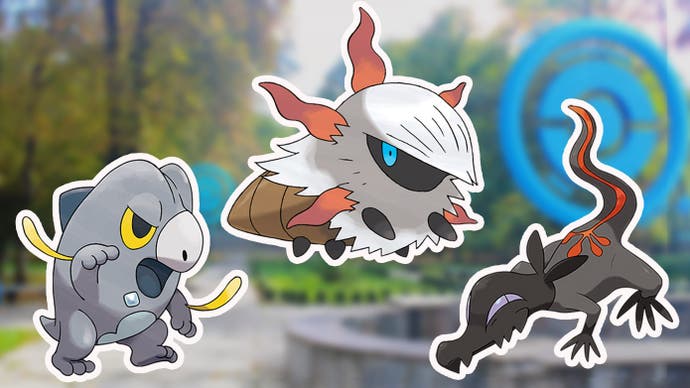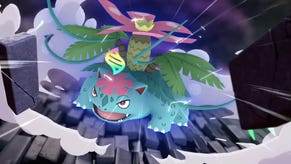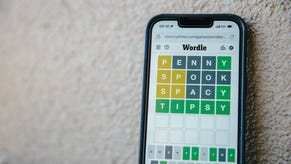Pokémon Go's rarest Pokémon and how to increase your chances of getting rare Pokémon
What are the rarest Pokémon in Pokémon Go?
Collecting rare Pokémon and, in doing so, completing the Pokédex is one of the main goals in Pokémon Go.
Pokémon rarity in Pokémon Go, however, is not an exact science like it is in the mainline Pokémon series, since some Pokémon will become easier to find if you visit certain real world locations or partake in in-game events.
Now that the Pokémon Go Pokédex spans from Gen 1 to Gen 9, we’ve created a rare Pokémon list, so you know which creatures you need to be on the lookout for - whether it’s in the wild, during an event or from a research quest.
On this page:
Rare Pokémon list: What are the rarest creatures in Pokémon Go?
While this isn’t a complete list of every rare Pokémon, it does cover the majority of creatures which are currently difficult to find in Pokémon Go.
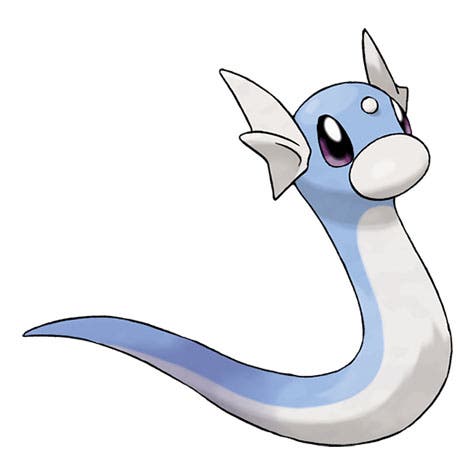
When hunting for rare Pokémon, it’s important to remember that certain factors, such as where you live, have an effect on which specific Pokémon are rare for you. If you live by the sea, for example, you’re more likely to encounter rare water-type Pokémon than someone who lives in a city.
How often you play Pokémon Go also has an effect, with regular players often finding a rarer Pokémon more frequently due to having a higher Trainer Level. This is because your Trainer Level sneakily gates a selection of Pokemon from the wild spawn pool if you’re not certain levels - so the higher your Trainer Level, the more Pokémon species you can encounter.
Finally, don’t forget that in-game events, like Community Day, have an effect on which Pokémon appear in raids, occasionally egg pools and in the wild, such as boosting specific types or particular Pokémon.
Considering the release of new Pokémon, like the Ultra Beasts, and Daily Adventure Incense, we've updated our list of the Pokémon which are considered rare in Pokémon Go in May 2024:
Armored Mewtwo
Armored Mewtwo is one of the rarest Pokémon in the game, because, at the time of writing, the only way to obtain it is via trading.
This is because Armored Mewtwo is a special costume variant of the Gen 1 legendary, which was originally available in five-star raids between 10th July to 31st July 2019. It has only returned once since this date during the Pokémon Day 2020 celebrations in February of that year. There has been no sight of Armored Mewtwo since these days and no sign of its return.
Interestingly, Armored Mewtwo is the only costume Pokémon to have different stats when compared to its non-costume form, along with having a different moveset.
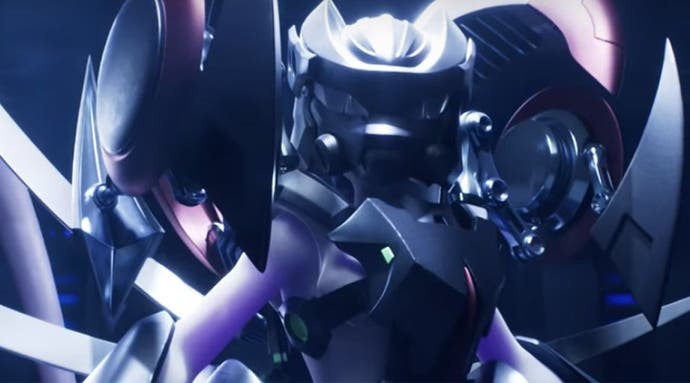
Clone Pokémon
Clone Pokémon are a set of four Costume Pokémon - Clone Venusaur, Clone Charizard, Clone Blastoise and Clone Pikachu - that, at the time of writing, have only been available in Pokémon Go between 25th February to 2nd March 2020. Due to their very limited release, the only way to currently obtain a Clone Pokémon is through trading.
The Clone Pokémon were part of the celebrations for Pokémon Day 2020 and the release of Pokémon: Mewtwo Strikes Back - Evolution, which is the remake of the first Pokémon movie, in Pokémon Go. As a homage to these films, the Clone Pokémon all share the same design as the clones Mewtwo creates, such as Clone Charizard having brown stripes.
At the time of writing, there's been no sign of the Clone Pokémon returning to Pokémon Go or the release of new Clone Pokémon, such as Ninetails or Vaporeon. Nor can you recreate the famous Clone Pikachu slap.
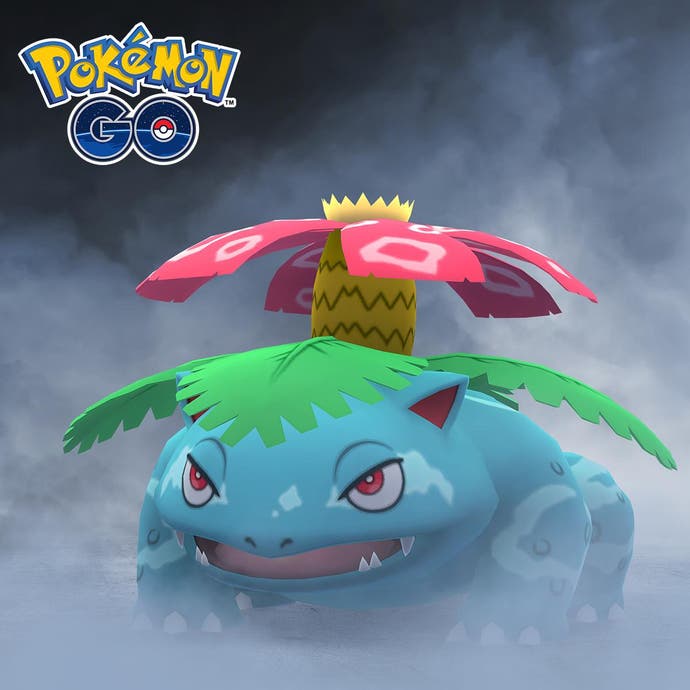

Galarian Articuno, Galarian Zapdos and Galarian Moltres
Galarian Articuno, Galarian Zapdos and Galarian Moltres can only be encountered while using Daily Adventure Incense. This means you have 15 minutes per day to cover as much ground as possible in hopes of randomly finding one of these legendary birds.
Catching Galarian Articuno, Galarian Zapdos and Galarian Moltres involves a good amount of luck, because they all share a base catch rate of 0.3% and a flee rate of 90%. It's very reminiscent of hunting roaming Pokémon in the mainline games - you have that wonderful moment of finally finding them in the wild, only to have it vanish as they escape the Poké Ball before vanishing from sight. Though, if you have one going spare, you could always use a Master Ball for a guaranteed catch.
Just remember to use your Daily Adventure Incense every day, so you can, eventually, add these Pokémon to your collection!
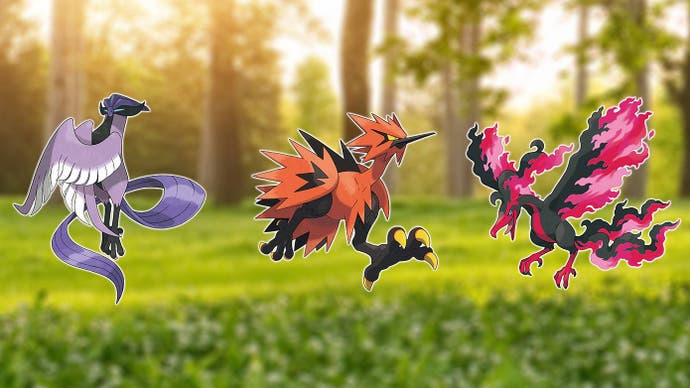
Rotom
While Rotom has six forms, only four have been been released into Pokémon Go at the time of writing and, if you weren't able to catch them during their small release windows, the only way to obtain Rotom is by trading with another player.
Wash Rotom was originally only available to players who purchased a Go Fest 2020 ticket and had it photobomb one of their Go Snapshot pictures. It did, however, become available to all players during the Sixth Anniversary event in July 2022 and was the final reward for completing this event's timed research quest.
Mow Rotom was the second form to be released and, at the time of writing, was only avaliable to players who attended Go Fest 2022 Berlin. There it could once again be found by having it photobomb Go Snapshot pictures.
Frost Rotom was the third form to be released and, at the time of writing, has only been made avaliable to players who attended in-person Go Fest 2023 events at either London, Osaka or New York in August of that year. Like the other Rotom forms, Frost Rotom could be found by having it photobomb Go Snapshot pictures.
Regular Rotom was released during Go Tour: Sinnoh in February 2024 via the Ghost in the Machine timed research quest, which was unlocked by redeeming a code. While this means it was available worldwide, if you didn't know about the code then you didn't get the Rotom. Whether Regular Rotom will make a return is yet to be seen along with how it can be obtained.
While we're still waiting for news about Fan Rotom's release, Heat Rotom will be making its first appearance during Go Fest 2024: Sendai photobombing Go Snapshot. When Heat Rotom will make it's global release, however, is still unknown. Hopefully we'll see it, and the other Rotom forms, in the future!
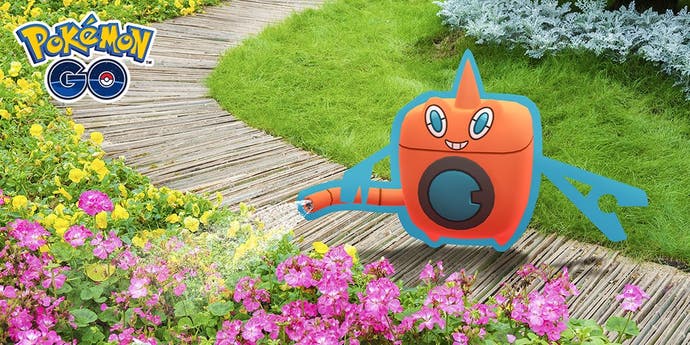
The Lake Guardians - Uxie, Mesprit and Azelf
Uxie, Mesprit and Azelf are the Lake Guardians of the Sinnoh and, despite being the only legendary Pokémon to appear in the wild outside of events and Daily Adventure Incense, they’re three of the rarest Pokémon in the game.
This is due to two very important factors - they’re very rare spawn rate and that all three are regionally exclusive Pokémon.
The Lake Guardians can be found in the following regions:
- Uxie - Asia and Pacific regions
- Mesprit - Europe, Middle East, Africa and India
- Azelf - Americas and Greenland
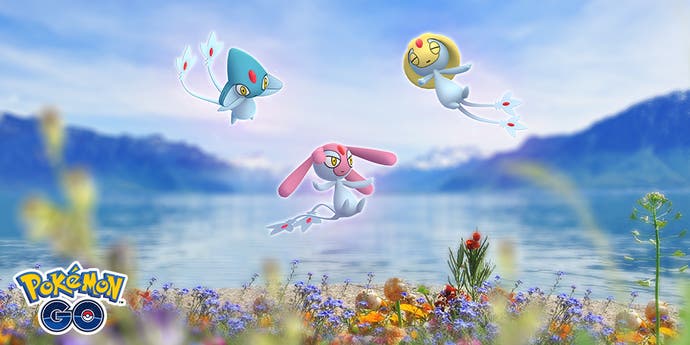
So, even if you’re lucky enough to encounter one of the Lake Guardians in the wild, you’ll only ever find the one which lives in your region.
Uxie, Mespirt and Azelf do make the occasional appearance in five-star raids and, through the power of Remote Raid passes and apps like Poke Genie, it’s possible to battle each of them no matter where you are.
Origin Forme Dialga and Palkia with Adventure Effects
Origin Forme Dialga and Palkia are alternative forms for the Gen 4 legendaries Dialga and Palkia (who saw that coming?) and were released during the Go Tour: Sinnoh event in February 2024. It's important to note that they're whole new Pokémon, meaning you can not transform a regular Dialga or Palkia into one of these forms. So far both Origin Formes have only been available in five-star raids during Go Tour: Sinnoh, so, if you didn't catch one during this event, then you either need to trade for them or wait for their return.
What makes Origin Forme Dialga and Palkia truly special though are their Adventure Effects - special abilities you can ultise to change the world of Pokémon Go for a short period of time. Origin Forme Dialga has Roar of Time which pauses the timer for items like Lucky Eggs and Daily Adventure Incense, while Origin Forme Palkia can use Spacial Rend to increase distance at which you encounter wild Pokémon. Not every Origin Forme Dialga or Palkia has an Adventure Effect, however, and that's where their rarity lies.
If you picked the Diamond version of the Go Tour: Sinnoh event, for example, you could easily catch an Origin Forme Dialga with Roar of Time, but your chances of catching an Origin Forme Palkia with Spacial Rend were far lower. If lucky wasn't on your side, then you need to trade for an Origin Forme Palkia with its Adventure Effect and vice versa. Hopefully it will be easier to get both Origin Formes with their Adventure Effects in the future.

Unown
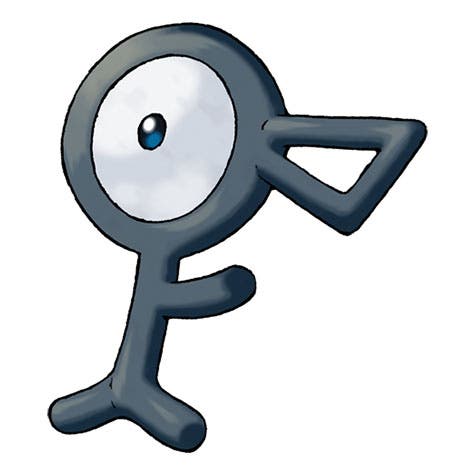
The easiest way to find Unown is in the wild and in raids during special in-game events like Go Fest. They are also incredibly rare spawns outside of events - with emphasis on incredibly. If Arceus blesses you with such an encounter, we highly recommend using Golden Razz Berries to catch the Unown!
The true challenge Unown offers, however, depends on how much of a completionist you are, because there are 28 Unown forms to collect! Since only a specific selection of Unowns appear in a small number of events each year, this is a challenge which will take you years to complete.
Larvesta and Volcarona
At the time of writing, Larvesta and Volcarona are two of the rarest Pokémon in Pokémon Go. This is because, even though Larvesta can be obtained from 2km, 5km and 10km eggs, it sits on the highest rarity tier. Due to this, it may take you a very long time to hatch a Larvesta.
Even after you've caught a Larvesta, your journey to adding Volcarona to your Pokédex has just began as you need 400 Larvesta Candy for this evolution. While using Rare Candy and setting Larvesta as your buddy Pokémon will help you gather this candy, it will take you a good amount of time to collect 400 Larvesta Candy.
We recommend simply continuing to hatch eggs and, eventually, you'll get a Larvesta. Just keep in mind that adding Volcarona to your Pokédex is a long term goal!
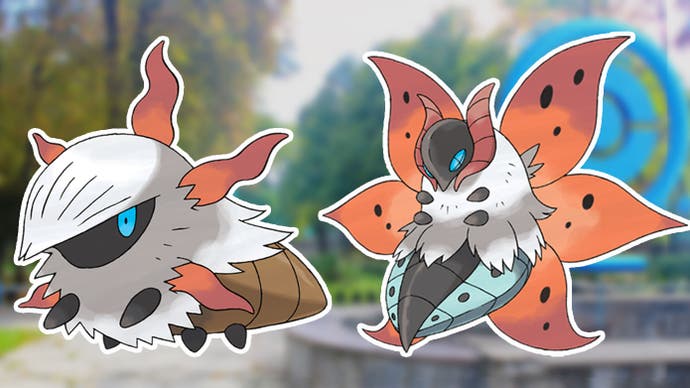
Salandit and Salazzle
While Salandit is easy to hatch, Salazzle, its evolution, still remains one of the rarest Pokémon in the game due to how only female Salandits can evolve into Salazzle with 50 Salandit candy. Hatching a male Salandit will help you gather the candy you need for this evolution, but it also puts you back in the position of hunting down another 12km egg.
If you want to add their entries to your Pokédex, your quest begins by hatching a Salandit from a 12km egg - the only way to currently obtain one. These strange eggs can only be obtained by defeating a Team Go Rocket Leader, so you’ll need to start gathering Mysterious Components.
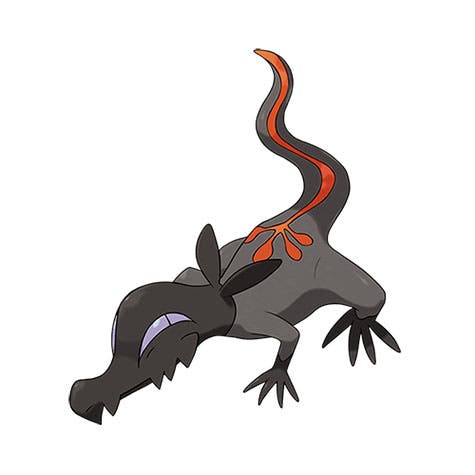
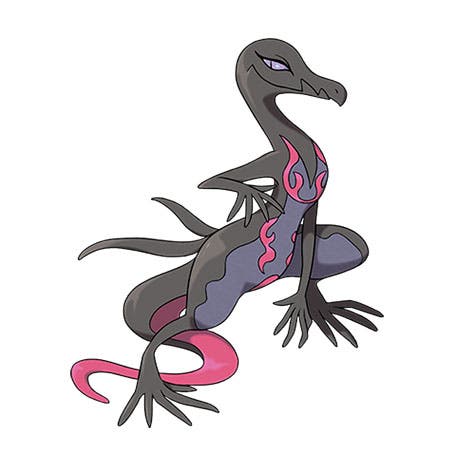
We recommend gathering a good number of 12km eggs, because while Salandit may now sit on Tier 1 - alongside Sandile, Pawniard, Vullaby, Deino and Pancham - you still need some good luck on your side because...
Kecleon
The promised day occured in January 2023 when, nearly four years since the last release of a new Gen 3 Pokémon, Kecleon finally arrived in Pokémon Go.
To catch Kecleon, you must find a PokéStop with a mostly invisible Kecleon clinging to it. Once you've found a PokéStop like this, press on the Kecleon until it jumps off the Photo Disc and appears on the map near the stop. Now all you have to do is catch the Kecleon!
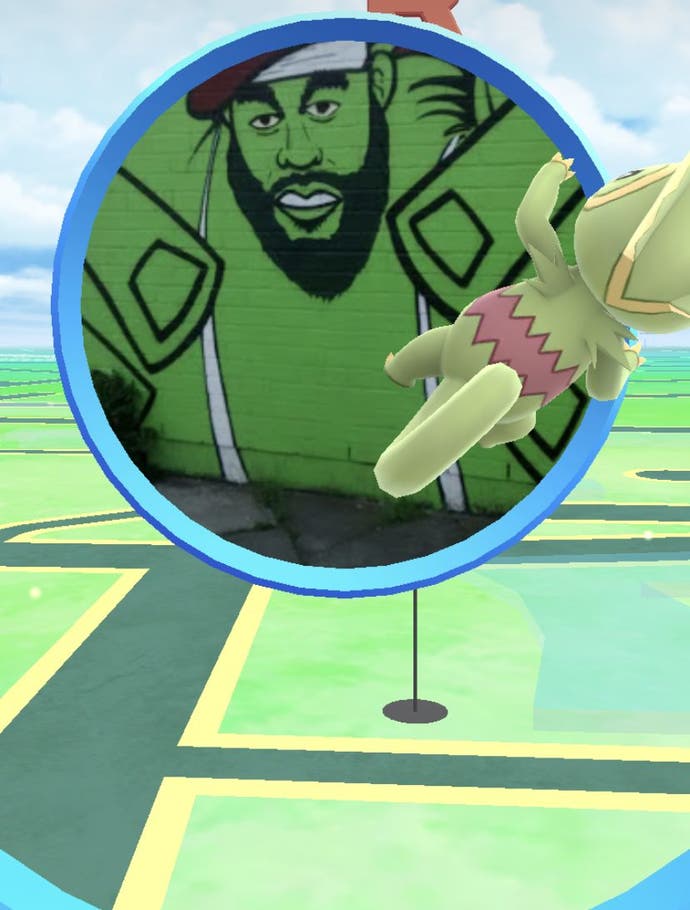
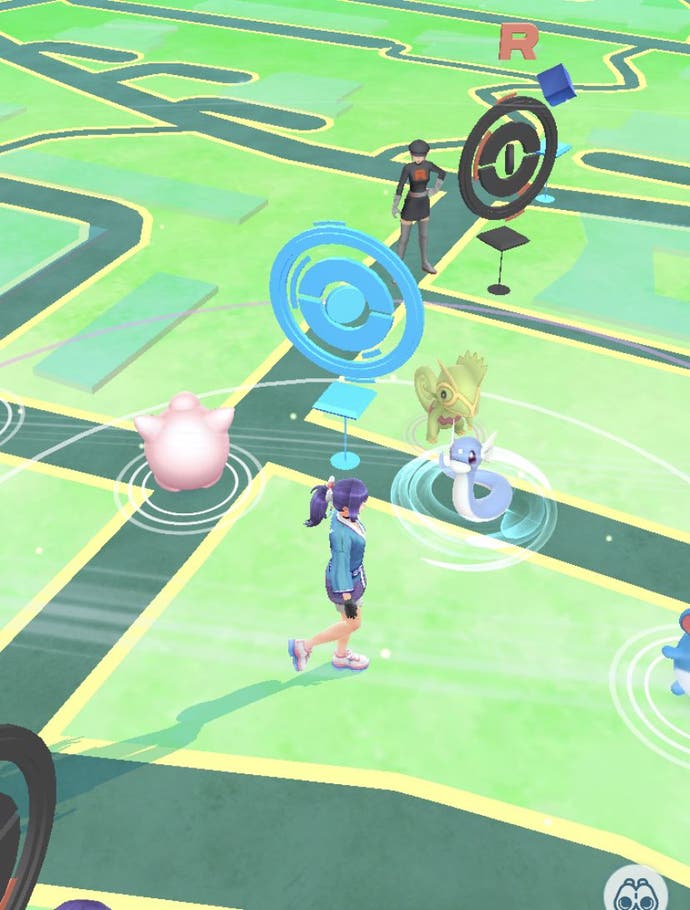
You may find it rather difficult to find a PokéStop with a Kecleon on it though. Personally, it took me a couple of weeks to encounter my first. Thankfully, a number of in-game events have included an increase to the number of Kecleon spawning, so we'll hopefully see this bonus return in the future.
If you'd like to learn more about chameleon in Pokémon Go, visit our how to catch Kecleon guide.

Frigibax, Arctibax and Baxcalibur

Frigibax is currently one of the rarest Dragon and Ice-type Pokémon in Pokémon Go. If you want to add it to your collection, you can either find it in the wild or hatch it from a 10km egg where it sits on Tier 4.
From my experience, Frigibax is a very rare wild spawn. It's only ever made three appearance on my radar since it's release - this include the in-game event it was released during in September 2023 - and vanished before I could reach its location the first two times I attempted to catch it. Thankfully, luck finally came my way on my third attempt but I haven't seen it since... For this reason, I highly recommend keeping an eye on your radar if you haven't caught it yet alongside prioritising hatching any 10km egg you collect.
Once you've got a Frigibax, you'll need 125 Frigibax Candy to evolve it into Arctibax and, finally, into Baxcalibur. You may want to collect some additional candy for Frigibax as well since Baxcalibur is quite the useful Pokémon to have on your team.
Wiglett and Wugtrio
Wiglett can only be caught in beach biomes in Pokémon Go and, on top of that, it's a rare spawn. Due to both of these facts, it's important that you ensure you're in a beach biome when searching for Wiglett. The easiest way to make sure you're in the right biome is to first visit a beach and, secondly, attempt to catch any Pokémon. If the background of the catch screen is a beach, you're in the right place! Check out our how to get Wiglett guide if you don't live near a beach, because there might be a beach biome nearer by than you think.
Once you've caught a Wiglett, you'll need 50 Wiglett Candy to evolve it into Wugtrio. Since it's a rare spawn though, it's a good idea to set Wiglett as your buddy Pokémon to earn additional candy as you explore Pokémon Go. Keep in mind that Wiglett does appear to be quite the rare spawn. Personally, I've only encountered Wiglett twice - once on the Pokémon radar before I caught it for the first time and as a weather boosted spawn.

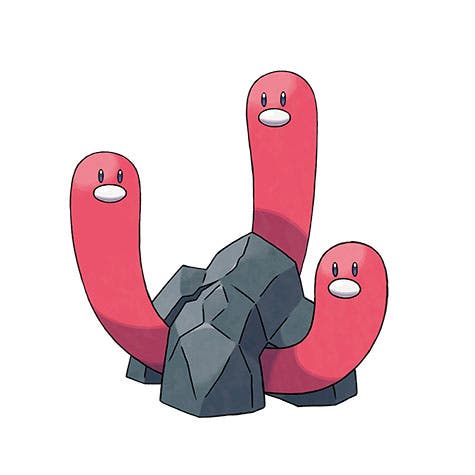
Charcadet, Armarouge and Ceruledge
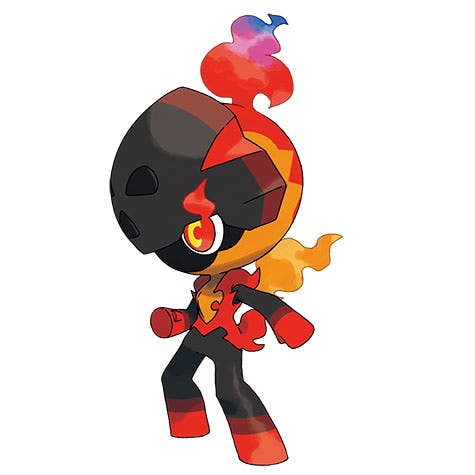
Charcadet can only be found by hatching 10km eggs where it sits on Tier 3 alongside Jangmo-o. While this means its techincally easier to hatch than Frigibax or Larvesta, keep in mind that you need two Charcadets to fully complete its related Pokédex entries. So get your walking boots on - it's hatching time. Remember, if you're having trouble hatching a Charcadet you can always trade for one.
When you've finally got a Charcadet, it's time to evolve it into either Armarouge or Ceruledge. (This is why I mentioned needing two Charcadets.) This isn't as simple as just gathering the required 50 Charcadet Candy for each evolutions, so 100 Charcadet Candy in total, though as you need to fulfill a special requirement and this differs depending on which evolution you want.
For Armarouge, you need to defeat 30 Psychic-type Pokémon with Charcadet as your buddy and have 50 Candy. Meanwhile, Ceruledge requires you to defeat 30 Ghost-type Pokémon with Charcadet as your buddy and the 50 Candy. If you'd like some tips on how to get these evolutions, check out our how to get Armarouge and Ceruledge in Pokémon Go guide. Hopefully all the walking around with Charcadet as your buddy will help you get all of the candy you need, but you can always use Rare Candy to get more.
Meltan and Melmetal
Every player can obtain a Meltan through the Let’s Go, Meltan special research quest, but the ease at which you’ll evolve it into Melmetal depends on whether you own Pokémon Home, Pokémon: Let’s Go Pikachu or Let’s Go Eevee.
This is because, to open the Mystery Box which activates Meltan spawns, you must transfer at least one Pokémon from Pokémon Go to any of these three games. Once opened, the Mystery Box will last for an hour with a spawn rate of one Meltan per minute and you’ll have to wait three days until you can use it again.
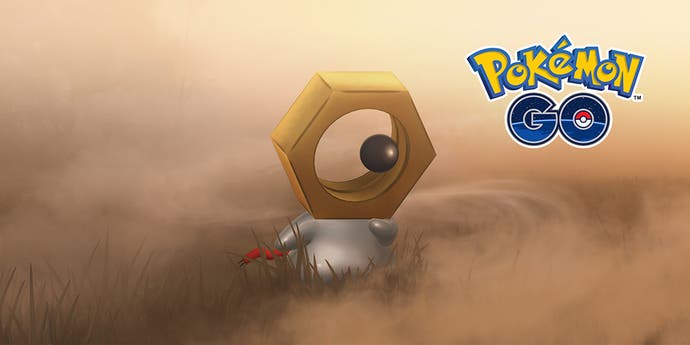
You’ll need 400 candy to evolve Meltan into Melmetal, so, even with Pinap Berries, you’ll have to use the Mystery Box a number of times.
Without the Mystery Box, be prepared to use a lot of Rare Candy and have Meltan set as your buddy for quite a while.
Noibat and Noivern
Noibat is currently a rare spawn in the wild. Obtaining this Pokémon, however, is only half the battle, because you need 400 Noibat candy to evolve one into Noivern. This means you’ll need to either get lucky when it comes to finding Noibat, spend a lot of Rare Candy or get ready to have it as your buddy Pokémon for a long while.
Noibat might have had it's own Community Day back in February 2023, but, if you missed this event, you may still have trouble encountering a Noibat and gathering the massive amount of candy required for its evolution.
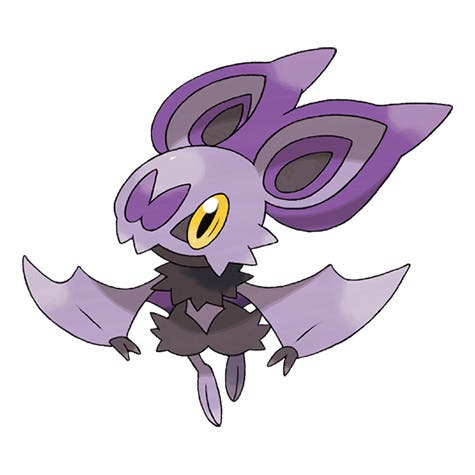

Jangmo-o, Hakamo-o and Kommo-o
Jangmo-o is Gen 7's addition to Pokemon Go’s rare dragon-type gang.
While the Gen 7 Pokémon does appear in the wild and through Daily Adventure Incense, it’s a very rare spawn; so, if you find one, make sure you use some Pinap Berries to double your catch candy. Jangmo-o can also hatch from 10km where it currently sits alone on Tier 3 with Charcadet and is one of the Research Breakthrough rewards for the World of Wonders Season.
Once you’ve caught a Jangmo-o, you’ll need 125 candy to fully evolve it into Kommo-o.
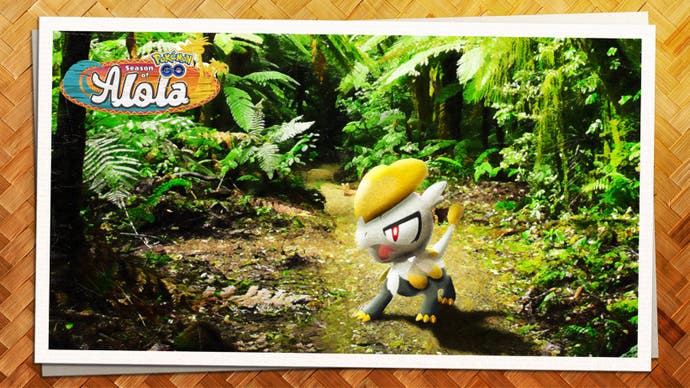
Yamask, Cofagrigus, Galarian Yamask and Runerigus
Yamask makes this list, because it’s only available during the yearly Halloween event. So don’t play during Halloween? No Yamask for you.
When Yamask is available, however, it can be found through a variety of means - from in the wild to event-exclusive field research tasks.
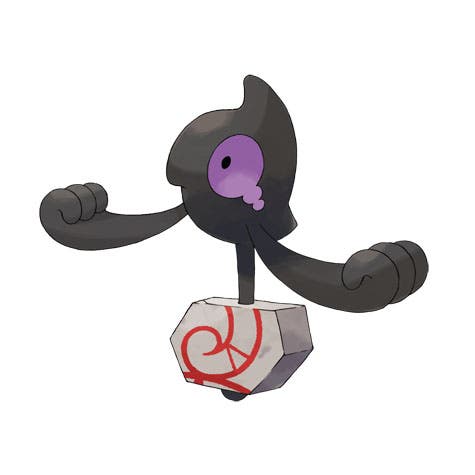
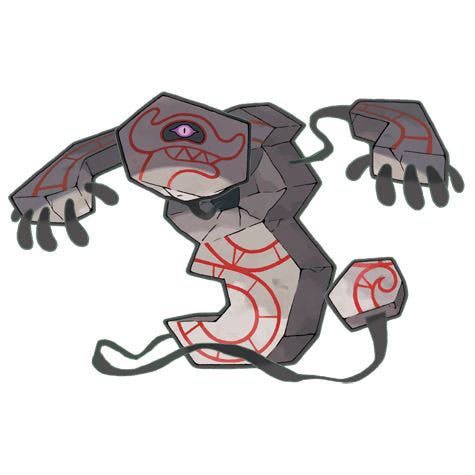
While Galarian Yamask is a little harder to track down, it has been known to appear in raids, as a reward from field research, special research quests and, during the 2021 Halloween event, it was in the 7km egg pool.
Yamask and Galarian Yamask evolve into different Pokémon - Cofagrigus for traditional Yamask and Runereigus for the Galar variant - and, while both require 50 candy to evolve, you need to get a Runereigus.
Spiritomb

While Spiritomb has, over the years, become easier to find, it can still only be caught during the yearly Halloween event.
Originally it could only be obtained by completing a special research quest - A Spooky Message in 2018 and 2019, and A Spooky Message Unmasked in 2020 - but, in 2021, it was added to the Halloween event-exclusive field research tasks.
In 2022 Spiritomb was, sadly, confined to the pay-to-play Halloween timed research quest. When 2023 rolled around, however, we saw a return of the free-to-play Spiritomb Limited Research, so hopefully that will continue to make an appearance during future Halloween events.
Zygarde

Well Zygarde itself is actually pretty easy to get - all you have to do is complete Step 3 of the From A to Zygarde special research quest. No, what I want to talk about here is having Zygarde reach its Complete Forme.
If you want to change Zygarde's forme - first to 50% and then to Complete - you need to collect Zygarde Cells by using Routes. How easy this will be for you to achieve depends on how many Routes are in your local area and your luck when it comes to Zygarde Cells spawning.
In my experience, Zygarde Cells usually spawn towards the end of a Route. Yet, they can be easily missed by entering a Pokémon encounter or looking at another aspect of the game. I've also experienced the Zygarde Cell timing out, making it impossible for me to collect, so, for this reason, it's a good idea to simply be looking at the map screen when approaching the end of a Route.
You will need 250 Zygarde Cells in total - 50 for it's 50% Forme and 200 to reach the Complete Forme. Best of luck on those Routes.
Varoom and Revavroom
Varoom is another Pokémon confined to 12km eggs and currently sits alone on Tier 3. While this may sound like Varoon is easy to hatch since there's no competing Pokémon on its tier, being on Tier 3 makes Varoom the rarest Pokémon in 12km eggs at the time of writing. Due to this, you may find yourself defeating a lot of Team Rocket Leaders and hatching 12km eggs unless you get lucky or trade for it.
When do get a Varoom, you'll need 50 Varoom candy to evolve it into Revavroom. Since you can't use Pinap Berries, you can get more Varoom candy by either using Rare Candies or setting it as your buddy Pokémon.
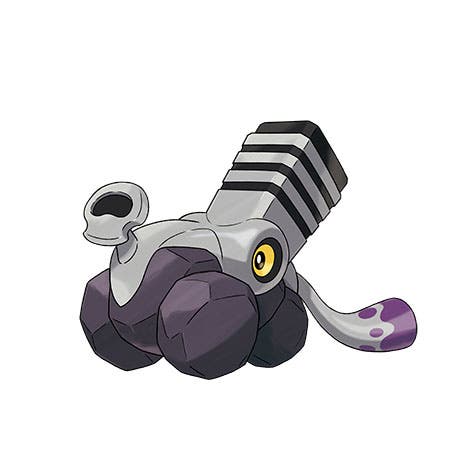
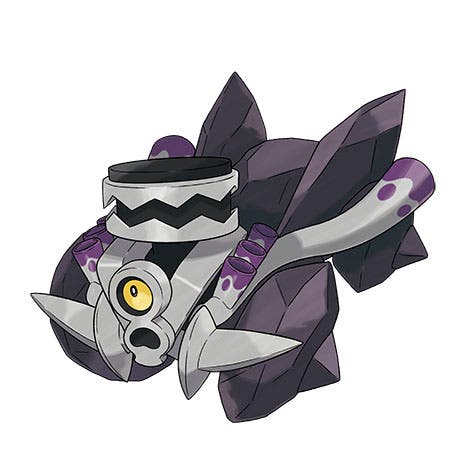
Sandile, Krokorok and Krookodile
Sandile is afflicted by the same curse as Salandit and Varoom - 12km eggs. Thankfully, both male and female Sandiles can evolve, but, the downside, is that you need 125 candy to fully evolve this Pokémon. This means you either need to hatch a lot of Sandiles, spend a good amount of Rare Candies or start walking with it as your buddy.
Sandile has, however, become slightly easier to hatch since they now sit on the first 12km egg pool tier. Though, with Pawniard, Vullaby, Deino, Salandit and Pancham, this tier is a little crowded.
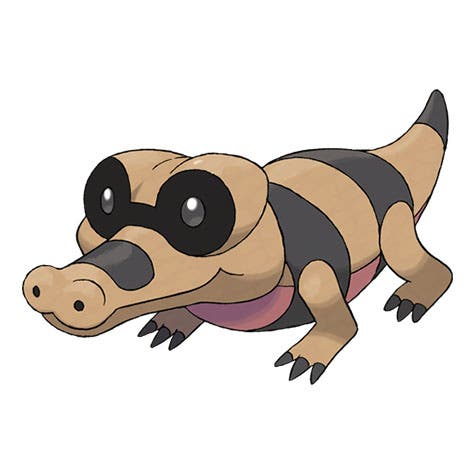
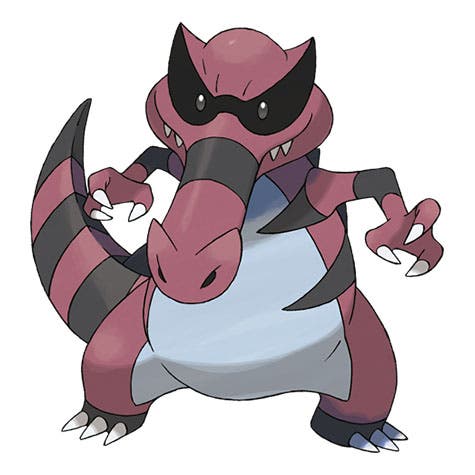
Ultra Beasts
Ultra Beasts are a collection of extradimensional Pokémon who hail from Ultra Space and debuted as part of Gen 7. There are 11 Ultra Beasts in total, with eight so far appearing in Pokémon Go via five-star raids and two special research quests. This number will increase to nine once Poipole can evolve into Naganadel.
The Ultra Beasts rarity comes from how their part of the rotating five-star raid pool, so, if you miss one, you'll have to wait until it returns to the raids. Celesteela and Kartana are also regionally exclusive - with Celesteela appearing in southern hemipshere raids and Kartana in the northern hemipshere raids.

The first Ultra Beast to visit Pokémon Go was Nihilego, which appeared in five-star raids and as one of the rewards for the A Radiant World special research quest as part of Go Fest 2022 on Sunday, 5th June. In the following months, Pheromosa, Buzzwole and Xurkitree all saw their intial releases at Go Fest Berlin, Seattle and Sapporo. All three were then made available worldwide as part of the Go Fest 2022: Finale event.
The next two Ultra Beasts - Celesteela and Kartana - were then released as part of the Test Your Mettle event in September 2022, before Guzzlord was released in November 2022.
Next in line were Poipole and, it's evolution, Naganadel. Poipole was released during the World of Wonders Season through the aptly titled World of Wonders special research quest, which itself is available till the end of May 2024. If you haven't unlocked the quest by the end of this month, then you won't be able to catch Poipole for a while. It's also important to note that, at the time of writing, the ability to evolve it into Naganadel is locked. Though, considering the large amount of Poipole the quest rewards you with, it should, hopefully, be quite easy to evolve. Prepared to be wrong though...
Thursday 23rd May sees arrival of two new Ultra Beasts - Stakataka and, sadly, Blacephalon. (Not a fan of Blacephalon. Not a fan of it at all...) Like Celesteela and Kartana, these Ultra Beasts are tied to a regionally exclusive, with Blacephalon appearing in the western hemisphere and Stakataka in the eastern hemisphere.
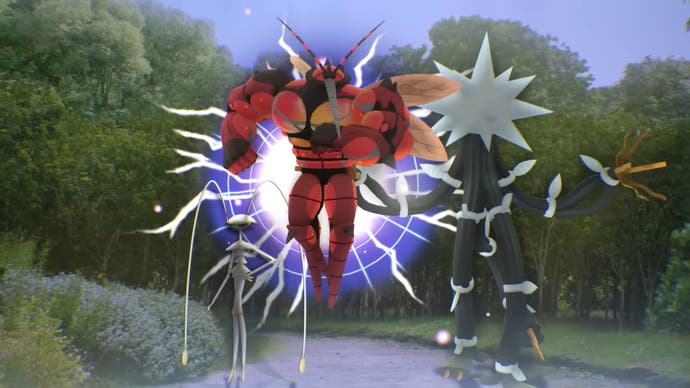
Regionally exclusive Pokémon
When it comes to regionally exclusive Pokémon, rarity is a subjective matter. European players plagued by Mr. Mime may long for a Corsola or Tauros, while American trainers may desperately want the sinister Gen 1 Pokémon and its tiny offspring, Mime Jr. Oricorio and Flabébé also fall under this banner, with their different forms being spread out across the world.
No matter where you live, regionally exclusive Pokémon can be found in the wild.
The expections are Celesteela, Kartana, Blacephalon and Stakataka, the regionally exclusive Ultra Beasts, which, when they're available, will appear in the five-star raids of their specific regions.
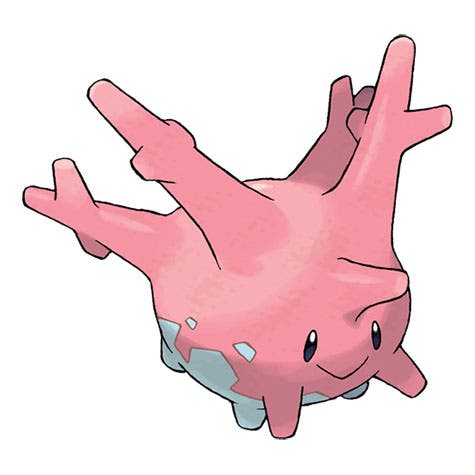
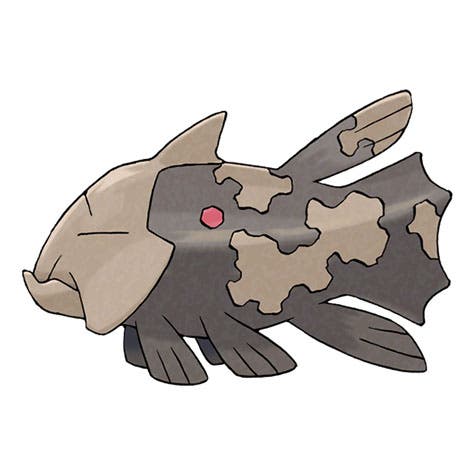
Some regionally exclusive Pokémon, like Solrock and Lunatone, rotate their locations during specific events and remain in these locations until the next year’s event occurs. This gives players who’ve not caught these Pokémon yet the chance to add them to their Pokédexs.
Meanwhile, special events, like Go Fest, have also seen specific regionally exclusive Pokémon appear in the wild or raids. It should be noted, however, that you may need to purchase a ticket to said event for these Pokémon to appear.
The regionally exclusive factor of Pokémon Go also plays a part in collecting of all the Vivillon forms, but you can learn more about that in Vivillon's own dedicated section.
Shiny Pokémon
Shiny Pokémon are rare Pokémon with alternative colourings to their traditional forms and, while not every Pokémon has had their shiny form released in Pokémon Go, those which have are very collectible.
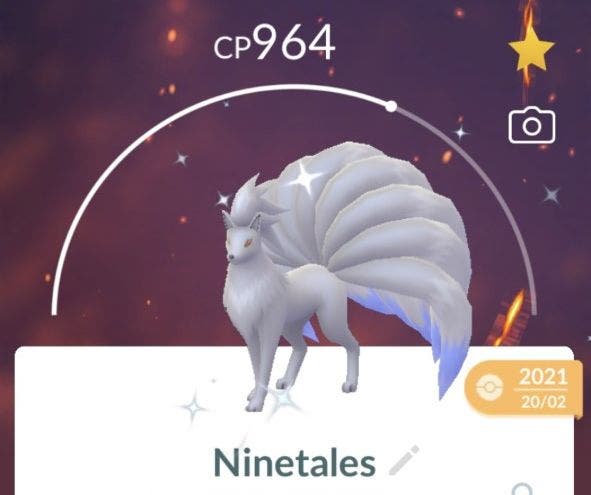
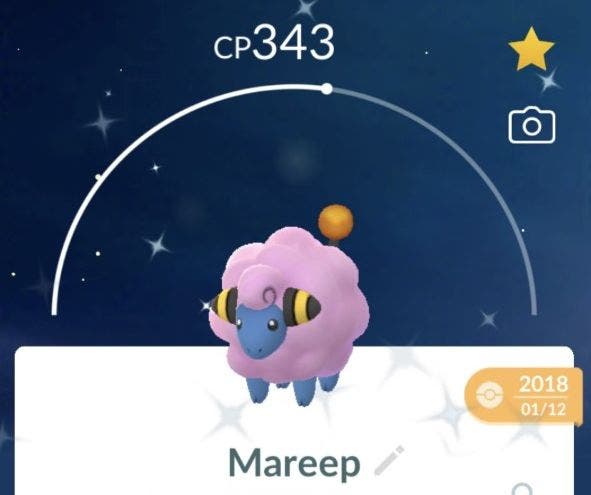
Encountering shinies all depends on having that Pokémon’s shiny odds be in your favour for the encounter you’re currently having. Certain events, like Community Days, do increase the odds of shiny Pokémon appearing, while catching Pokémon of the same type will naturally increase your chances of finding shiny Pokémon.
It’s important to note that certain shiny Pokémon are rarer than others and you can learn more on our shiny Pokémon guide.
Hisuian Pokémon
Hisuian Pokémon are regional variants hailing from the Hisui region; each one is a reworked version of a Pokémon from a past generation differing in both appearance and type.
Like Galarian Pokémon, a number of Hisuian Pokémon, such as Sneasler, can only be obtained by evolving a Hisuian Pokémon. Some of these evolutions involve completing a special requirement, but, thankfully, the candy you collect for that specific Pokémon will work for its Hisui version.
At the time of writing, Hisuian Pokémon can be obtained by finishing specific seasonal field research tasks, completing a Research Breakthrough and hatching a 7km egg earned via a Gift Exchange. Remeber - you need to find the right seasonal field research task for the Hisuian encounters, while both the 7km egg and Research Breakthrough might result in you getting a different Pokémon. Keep at it though and you'll soon have all the Hisuian Pokémon! (Or you can just trade for them...)

It's also important to note that six Hisuian Pokémon - Hisuian Braviary, Avalugg, Samurott, Typhlosion, Decidueye and Wyrdeer - were first made available in three-star raids during special Raid Day events. These Pokémon have been returned to three-star raids during certain in-game events, so keep an eye on the raid schedule to grab any you might be missing. It's also important to remember that, at the time of writing, Stantler can't evolve into Wyrdeer.
Finally, some Hisuian Pokémon can only be obtained through evolution, such as Hisuian Arcanine. While some just need a certain amount of candy for their evolution, others need you to also fill a special requirement. So if you want to add their evolutions to your Pokédex, check out our guides on evolving Hisuian Growlithe into Hisuian Arcanine, Hisuian Qwilfish into Overqwil and Hisuian Sneasel into Sneasler in Pokémon Go.
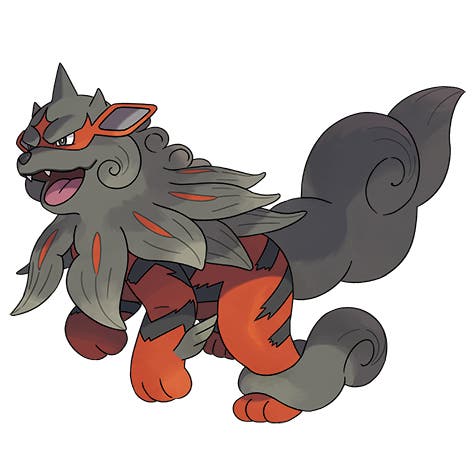
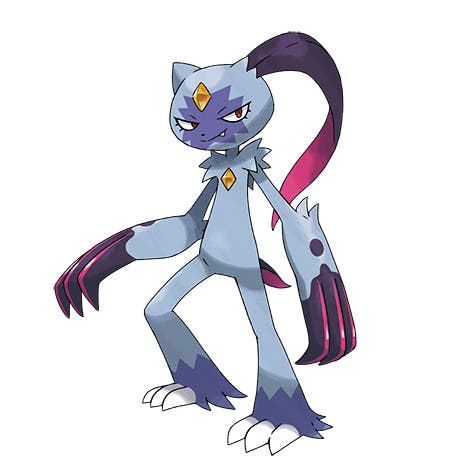
Alolan, Galarian and Paldean Pokémon
Alolan, Galarian and Paldean Pokémon are alternative variants - in both appearance and typing - for Pokémon from previous generations. Hisuian Pokémon have also started appearing in Pokémon Go, but, since some have only been available for limited time windows, we've given them their own section.

At the time of writing, only one Paldean Pokémon has been released into Pokémon Go - Paldean Wooper. This means we're only waiting for one more Paldean Pokémon to be released, Paldean Tauros, as there are only two Paldean Pokémon currently in the Pokémon universe. Though Paldean Tauros does have three different forms! It's important to note that Pokémon like Wiglett or Toedscool are not considered Paldean Pokémon. Instead, they are whole new Pokémon who look similar to Gen 1 Pokémon due to similar genetics.
A number of the Galarian Pokémon evolve into new Pokémon, such as Galarian Farfetch’d into Sirfetch’d, which, in Pokémon Go, requires you to meet a special requirement to complete. The same goes for Paldean Wooper who evolves into Clodsire.
The easiest way to obtain these Pokémon is by hatching 7km eggs you’ve collected outside of in-game events, due to how many events change the 7km egg pool. Alolan, Paldean and Galarian Pokémon have also been known to appear in the wild or in raids during specific events, such as Community Days.
Though not all Alolan and Galarian Pokémon make an appearance in the 7km egg pool. Galarian Mr. Mime, for example, has never appeared in the egg pool, instead only being via specific quests, in-game events or in Research Breakthroughs during specific periods of the year. This means if you're currently missing a Galarian Mr. Mime, along with Mr. Rime, you'll have to wait for its return.
Galarian Articuno, Galarian Zapdos and Galarian Moltres, however, can only be found while using Daily Adventure Incense. You can learn more about these legendary bird variants at the top of this list!
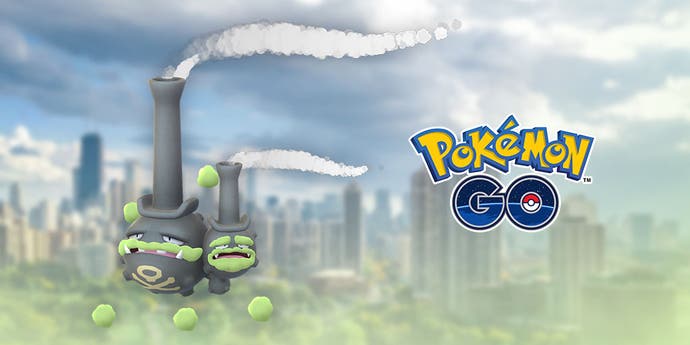
When it comes to collecting these Pokémon we recommend focusing on those which evolve into new Pokémon, such as Galarian Meowth and Galarian Yamask.
Scatterbug, Spewpa and Vivillon
Scatterbug, Spewpa and Vivillon's rarity doesn't come from how hard it is to get these Pokémon (unless your friends are refusing to send you gifts), but from the 18 different patterns Vivillon can have. You can also use the Gift Exchange feature in Routes once per day, but where this gift orginates from is selected at random.
These patterns are spread out across the world, technically making Vivillon a regional Pokémon, so this means, if all of your friends live in the same region, you'll only be able to collect one Vivillon pattern. Remember - you must pin the postcards that comes with your Gifts to make progress towards a Scatterbug encounter.
If you'd like to learn more about this butterfly Pokémon, visit our Vivillon patterns and map guide.
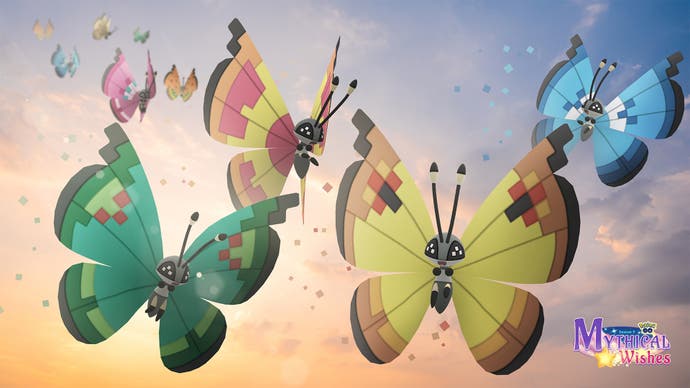
Meanwhile if you want to expand your Vivillon collection, try visiting sites like The Silph Road on reddit where you can connect with Pokémon Go players from around the world. You may even get lucky when conducting Remote Raids via apps like Poké Genie.
You only need to pin three postcards from a specific region to unlock its first Scatterbug encounter - the required number of postcards will increase after this point. Once caught, you next need to gather enough Scatterbug candy to evolve it into Spewpa and, finally, Vivillon.
Since it may be quite a while between your Scatterbug encounters, we recommend always using a Pinap Berry when attempting to catch this Pokémon. You can also gather extra Scatterbug candy by using Rare Candy and having it as your buddy Pokémon, because you'll earn one piece of candy for every 1km.
Costume Pokémon
Costume Pokémon are special outfit-wearing-Pokémon which appear throughout different events across the year in Pokémon Go. These outfits can range from Halloween costumes to hats to flower crowns, which, honestly, look like three flowers stapled to a Pokémon’s head.

Their rarity stems from how each Costume Pokémon’s availability is linked to an event and how some, like the Clone Pokémon or Star Hat Pikachu, have only been available once. Some also require you to buy a ticket to an in-game event like Go Fest or Go Tour: Kanto.
This means if you missed the event, didn’t wish to pay for an event ticket or hadn’t started playing Pokémon Go at the time, the only way to obtain this Pokémon by trading with another player.
Thankfully some Costume Pokémon - though mostly those with flower crowns - do make repeat appearances in different events.
The method used to catch a costume Pokémon depends on the event, but they have been known to appear in the wild, in raids, hatched from eggs and rewards from both research quests and Collection Challenges.

Pikachu Libre, however, can only be obtained by reaching Rank 24 in the Go Battle League.
Obtaining this special Pikachu can be quite the task, especially if you’re not experienced in Pokémon Go’s PVP side. Thankfully, we have guides on recommended Pokémon for the Great League, Ultra League and Master League to help you achieve this goal. We also recommend starting your journey to Rank 24 at the beginning of a new season, so you have a full three months to achieve this goal.
You can also obtain a Pikachu, Ph.D. by winning 100 PokéStop Showcases and getting the related Platinum medal. Getting this special Pikachu, like Pikachu Libre, will take a lot of work...
Finally, there's also seven regionally exclusive Costume Pokémon. This includes the Okinawan Kariyushi Shirt Pikachu that can only be found in the Okinawa prefecture of Japan and Green Balloon Flying Pikachu who can only be found in Taipei of Taiwan. Due to these specific locations, these Pikachus are very rare for players who don't live near or in those locations.
Legendary Pokémon
Since the majority of legendary Pokémon debut in five-star raids, rarity stems from how hard they are to defeat and how long you need to wait for them to appear in said raids rather than their spawn rate.
If you don’t have many legendaries in your Pokédex - be it because you’re a new player or don’t partake in many five-star raids - then we recommend either joining a local Pokémon Go group or using Remote Raid Passes and apps like Poke Genie.
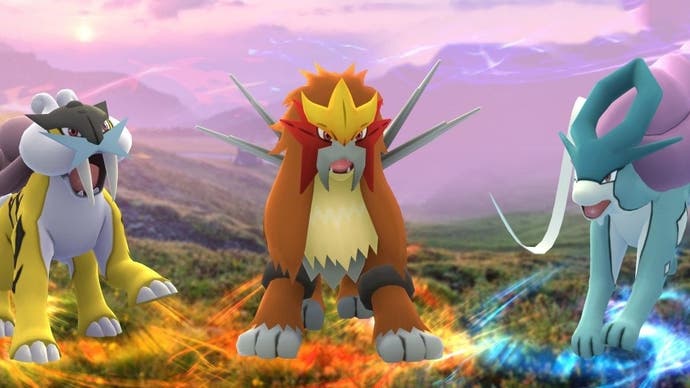
When it comes to actually catching the legendary - always make sure you’re using either Golden Razz or Silver Pinap Berries to increase your chances of catching the Pokémon. It’s also a good idea to watch the Pokémon for a bit to learn their move pattern and know when the best moment to throw your Poké Ball is.
Outside of five-star raids, legendary Pokémon have also been known to appear as Research Breakthrough rewards - though, at the time of writing, it has been a considerable while since this last occurred - and Shadow variants can be caught by defeating Giovanni or from five-star Shadow Raids.
They also appear as rewards from the Go Battle League once you reach Rank 20. To obtian a legendary through this method you need to win enough matches in a set to unlock a Pokémon reward, then catch Pikachu Libre. After doing so, any Pokémon reward you unlock has the chance of being the current five-star raid boss.
As mentioned previously, the Galarian variants of the legendary bird trio can only be found when using Daily Adventure Incense. Meanwhile, Azelf, Mesprit and Uxie also appear in the wild, as have the legendary dogs during Go Tour: Johto.
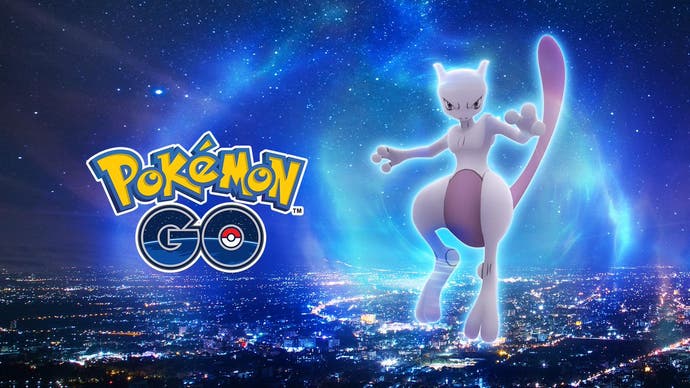
Mythical Pokémon
Mythical Pokémon, such as Mew, Celebi and Meloetta, make an appearance on this guide, because the only way to obtain them is by completing their special research questlines.
How long it takes you to complete each questline depends on your experience with Pokémon Go and how often you play. Once you’ve completed it, however, you’ll be rewarded with a mythical Pokémon that you can’t trade, which means each account can only have one of each mythical Pokémon.
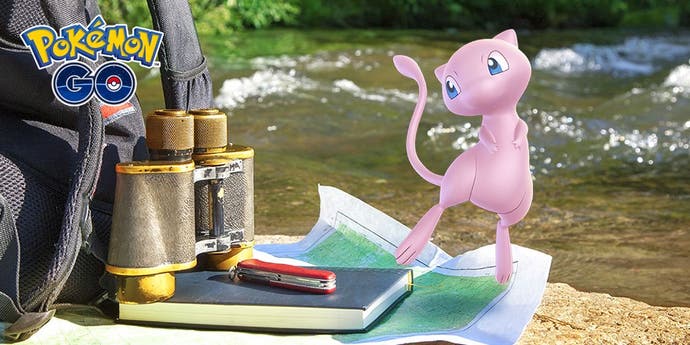
Unless, of course, you’ve gained access to a shiny mythical Pokémon Masterwork quest. At the time of writing, only four of such quests have been released in Pokémon Go: All-in-One #151, Distracted by Something Shiny, Wish Granted and Glimmers of Gratitude. Despite not having a deadline, all of these quests were only available for a short period of time - Wish Granted was only available to players who purchased it during Go Tour: Hoenn - so these shiny Pokémon are no longer available for newcomers.

All-in-One #151 did make a reappearance for the 7th Anniversary event in 2023, but it was still a pay-to-play event and could only be purchased during a limited period of time. This does mean, however, that the other quests may make a return during future in-game events so keep an eye out if you've missed one of these quests!
The next mythical Pokémon to arrive in Pokémon Go will be Marshadow who will be released as part of Go Fest 2024. Marshadow is a Fighting and Ghost-type Pokémon who hails from Gen 7. At first Marshadow will only be available to players who either attend a Go Fest 2024 event in-person or purchase a ticket to the global event, but eventually it will most likely be made freely available to every player for free via a special research quest. We've recently seen this happen with Diancie which, while originally released as part of Go Fest 2023, became available for free via the Glitz and Glam quest on Wednesday 1st May 2024. (Though, if you've already got a Diancie in your collection, you'll earn additional candy for this Pokémon instead...)
Below you can find a list of all the mythical Pokémon currently released for free in Pokémon Go, along with their associated quest and when they’re unlocked:
- Mew - A Mythical Discovery (Requires Trainer Level 15)
- Celebi - A Ripple in Time (Unlocks upon reaching Step 4 of A Mythical Discovery)
- Jirachi - A Thousand-Year Slumber (Unlocks upon reaching Step 7 of A Ripple in Time)
- Victini - Investigate a Mysterious Energy (Unlocks upon reaching Step 5 of A Thousand-Year Slumber)
- Meloetta - Finding Your Voice (Unable to confirm unlock method)
- Shaymin - Grass and Gratitude (Unable to confirm unlock method
- Diancie - Glitz and Glam (Unable to confirm unlock method)
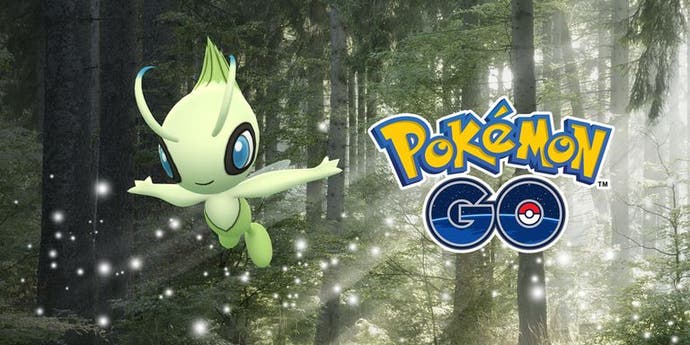
There are, however, three mythical Pokémon who are harder to obtain…
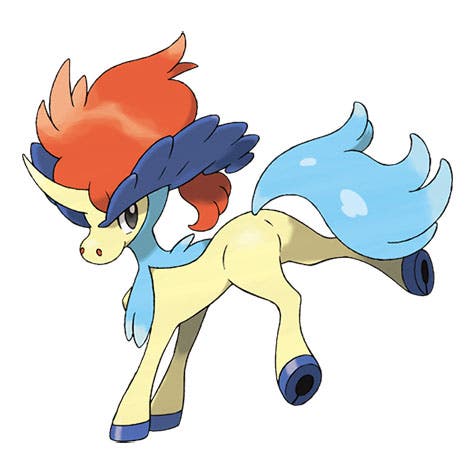
These Pokémon are Zarude, Hoopa and Keldeo - all of which can only be obtained by completing special research quests, which themsevles were only available for a limited amount of time. Zarude did make a return in March 2024 through the Rogue of the Jungle quest, but it was only on sale for a short period of time. Meanwhile Hoopa's quest, Misunderstood Mischief, was only unlockable from 1st September to 1st December 2021.
Keldeo's special research quest - Something Extraordinary - was only available between 10th December to 11th December 2022 and needed to be purchased from the in-game store. Hopefully we'll be able to obtain Keldeo for free some time in the future.
Since mythical Pokémon can not be traded and neither special research quest is currently available, it is, at the time of writing, impossible to get Zarude, Hoopa or Keldeo in Pokémon Go. If you're missing one of these mythical Pokémon, you'll simply have to wait and see if they return in the future.
The World of Wonders season has come to Pokémon Go. You can now catch Wiglett and, if you don't have one already, Diancie through the Glitz and Glam quest. There's also the Rediscover Kanto and World of Wonders quests to complete! Don't forget to try out Routes, Gift Exchange and Party Play while you're hunting down rare Pokémon, fighting in the Go Battle League or competing in PokéStop Showcases.
How to increase your chances of getting rare Pokémon in Pokémon Go
Here are some tips which will help you increase your chances of finding rare Pokémon in Pokémon Go:
- Increase your Trainer Level! As your Trainer Level increases, so does the variety of Pokémon you can encounter. This means a Level 30 player has a higher chance of encountering a rare Pokémon than a Level 10, so make sure you’re catching Pokémon, completing research quests and using Lucky Eggs to double the amount of XP you’ll receive.
- Use Incense and Lure Modules. Both of these items attract Pokémon to your location and, if you’re lucky, one of these may be a rare Pokémon. Incense is especially useful for rural players who may not have many Pokémon appearing in their location naturally. Meanwhile, once a Lure Module has been used on a PokéStop, any player can enjoy the bonus.
- Use your Daily Adventure Incense every day! Daily Adventure Incense may only last for 15 minutes, but it gives you the chance to encounter some rare Pokémon - from Jangmo-o to Tirtouga. It's also the only way to find and, hopefully, catch Galarian Articuno, Galarian Zapdos and Galarian Moltres.
- Trade with other players. Thanks to the inclusion of trading in Pokémon Go during 2018, you can now trade rare and even legendary Pokémon with other players. This is perfect if you meet someone who has a regionally exclusive Pokémon you don’t have or one you’ve been searching for. Just remember - you can’t trade mythical Pokémon and you must be in a specific range to the person you’re trading with.
- Hatch eggs. Eggs are one of the easiest and most effective ways of obtaining some of the more elusive Pokémon on the above list, because they offer you the chance to find creatures which don’t typically appear in your local area. It’s best to prioritise 12km and 10km eggs, because they offer rarer Pokémon than 5km and 2km eggs. When it comes to 7km eggs, however, it’s always best to check the egg pool as it can change during events.
- Pay attention to in-game events. The Pokémon Go events are the best time to catch new Pokémon whose spawn rate might drastically drop after the event ends or to find rare Pokémon like Unown. These events are also when you’ll be able to find costume Pokémon or special research quests which are only available for a limited time.
- Certain types of Pokémon prefer specific habitats. While it’s not obvious on the in-game map, the real world locations you visit while playing Pokémon Go will have an effect on which Pokémon you encounter. You’re more likely to encounter Water-types while playing near the sea or a lake, while Steel-type Pokémon are more likely to appear in urban areas, such as cities. Playing in different locations will help you find new Pokémon and maybe even that rare spawn you’re been looking for.
- Use Remote Raid Passes for five-star raids. If you want to add some legendaries to your Pokédex, then Remote Raid Passes are the way to go. With them and apps like Poke Genie, you can easily access raids against legendary Pokémon from across the world. Currently one Remote Raid Pass costs 100 PokéCoin, while three Remote Raid Passes costs 300 PokéCoins, which can either purchase using real world currency or earn by keeping Pokémon in Gyms.
- Look for, or research, Pokémon nests in your local area. Pokémon nests are clusters of Pokémon, from common to rare spawns, which repeatedly appear in the same location. Sometimes, however, they can only appear once, so make sure you catch as many Pokémon as possible if you find one. You’ll naturally encounter the occasional Pokémon nest as you play, but, if you want to find the one nearest to you, The Silph Road subreddit has created this hand Global Nest Atlas.
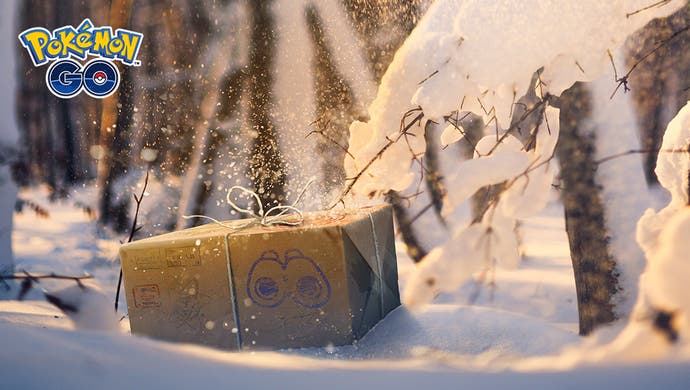
- Earn Catch Bonus medals. Every Pokémon type has a related Catch Bonus medal, which you level up by catching Pokémon of that specific type. The Hex Maniac page, for example, is the Catch Bonus medal for Ghost-type Pokémon and increasing its level - such as from Bronze to Silver - will give you a bonus every time you catch a Ghost-type Pokémon. This means that catching low-level Pokémon naturally increases your chances of getting rarer creatures.
- Complete your Special Research quest. Staying on top of your special research quests will help you catch mythical Pokémon like Mew and Shadow variants of legendary Pokémon. These Shadow variants are especially useful, because it may help you add a legendary Pokémon which hasn’t been available for a while to your Pokédex.
- You could always use a Master Ball. The Master Ball is the strongest and rarest Poké Ball there is, because, if used, it's guaranteed to catch a Pokémon. Once you've used a Master Ball, however, it's gone forever, so you need to be very selective with your choice of target. Master Balls are slowly being released in Pokémon Go as part of in-game events and, if you want one, you have to complete quite a long special research quest. Thankfully, they do stack so you can have more than one Master Ball at time. If you want to find out whether one is currently available, visit our Master Ball in Pokémon Go guide.
- When in doubt - catch every Pokémon you see. Just because a Pokémon is a common spawn, doesn’t mean catching it won’t assist you on your journey to becoming a Pokémon Master. Every Pokémon you catch will give you some XP and count towards a Catch Bonus medal, while others may provide you with candy for an evolution which hasn’t been introduced into the game yet. It’s also worth catching any evolved Pokémon you see, because they will provide you with more candy than their pre-evolved form. All of these factors will help you slowly gather every Pokémon you need to complete the Pokédex.
Good luck completing your Pokédex!
